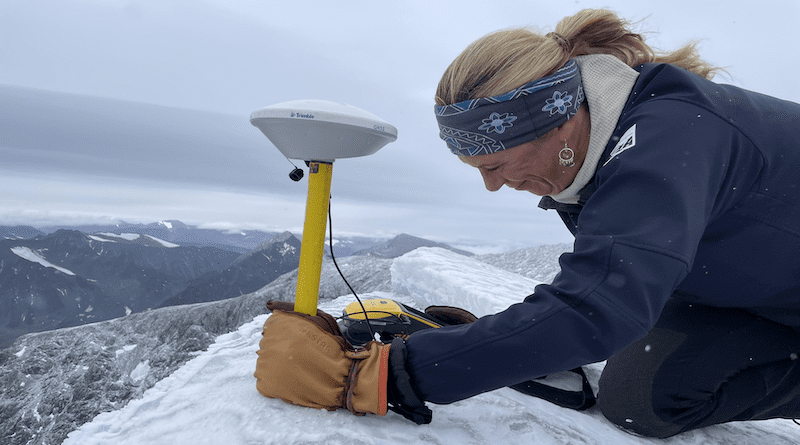Kebnekaise’s Southern Peak Continues To Melt – And So Do Other Swedish Glaciers
The glacier on Kebnekaise’s southern peak is shrinking. What was previously Sweden’s highest summit is now 1.4 meters lower than last year. Measurements also show great melting on other Swedish glaciers.
On September 11, the annual measuring of Kebnekaise’s southern peak was carried out. The height was measured at 2093.2 meters above sea level. This is a decrease of 1.4 meters since September 2022, when the height was measured at 2094.6 meters above sea level.
Since September 2019, Sweden has a new official highest point. Researchers at Stockholm University’s research station in Tarfala then noted that Kebnekaise’s southern peak was lower than the northern peak. The height of the southern peak, which is crowned by a glacier, was then 2095.6 meters, compared to the northern peak’s 2096.8 meters. The northern peak consists of stone and has a height that does not change.
“The measurement of the southern peak was not easy this year due to strong winds on the summit, but we needed to take advantage of the only weather window that was available to be able to carry out the measurement before new snow is added to the southern peak as autumn is coming in the mountains”, says Nina Kirchner, docent in glaciology and director of the Tarfala research station at Stockholm University.
Swedish glaciers are melting
Tarfala research station also participates in an international long-term monitoring program (World Glacier Monitoring Service) on mass balance calculations* for reference glaciers. Of the approximately fifty reference glaciers in the world that are included, four are in Sweden. These glaciers have been measured continuously for more than 30 years. The glaciers measured by the researchers at Stockholm University are Storglaciären (at the Tarfala research station), Rabot’s glacier, Mårma and Riukojietna. All four glaciers have decreased compared to 2022. Rabot’s glacier has decreased the most. Looking at average mass loss over the past ten years, this year’s loss has been twice the average for all four of these glaciers.
This year, the Rabot glacier and the Riukojeitna also melted in their highest areas. This means that the glaciers did not receive any new snow that could contribute to their growth. The snow that came in the winter melted away during the summer and even the ice that was no longer protected by the snow cover melted away.
“This could be the beginning of a glacier “starving to death”. The glaciers now need a year of positive mass balance to compensate for the loss. If such a year does not occur, the loss is irreversible”, says Nina Kirchner.

